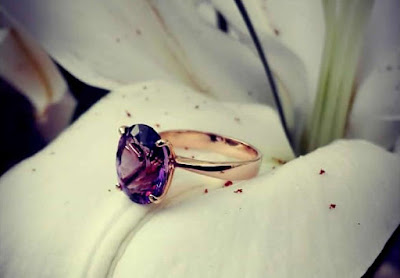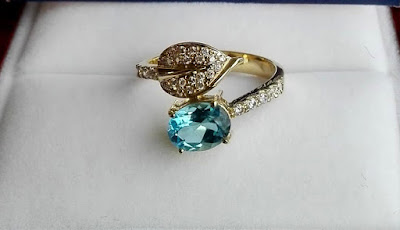It competes in brilliance with diamond and is credited with extraordinary qualities.
The zircon is one of the most interesting and misunderstood precious gems of nature, it has been sought and treasured by many civilizations without knowing that it was the oldest gem that has ever existed, but thanks to the American scientists of the university of Wisconsin-Madison and the technological advance of dating has been able to decipher the origin of the zirconium crystallization exactly 4.4 billion years ago.
As it was created in the eons ago and has been known for thousands of years, the zircon has a rich mythology. In the Middle Ages, for example, it was said that zircon helped to rest, induced deep sleep, drove away evil spirits, brought prosperity and promoted honor and wisdom in its owner.
According to some, the zircon relieves pain and is said to prevent nightmares, ensuring a deep and peaceful sleep. Beyond all this, it is believed that the zircon grants the user wisdom, honor and riches.
The brightness of a diamond
The zircon may be the last crystal in the alphabet of precious stones, but its sparkles, sparkles and flashes of color or fire rival the very diamond, so for centuries the natural white or colorless zircons were confused with them, and today in Many jewelers and jewelries day when you speak of zircon confuse it with the zircon, the synthetic crystal used to simulate the diamond, perhaps also because they are quite similar to their names.
Although it is true that the transparent zircon can be confused with diamond and zirconia, it is really known for its brightness and variety of colors. The zircon can be of almost any color you can imagine: including red, yellow, orange, brown, green, champagne, gold and saffron, but the most valued color is blue. All of them are different, pure and have a striking and characteristic fire that distinguishes it from other gems.
The zircon has one of the highest refractive indices in nature, surpassing three of the four large gemstones; ruby, sapphire and emerald. (1.92-2.01).
For gemologists, the refractive index of a precious stone is an optical property that refers to the relationship between the speed of light in vacuum and the speed of light through a transparent gem, a process that divides light into its spectral tones like a rainbow.
Then, the rainbow effect breaks and focuses on the facets of the gem to create the brilliant light show we see. Translated into the language of the rest of the mortals, the zircon is after the diamond the second most brilliant gem of all nature.
In the world of gems, a type of stone is often given different names for each of its colors, and this precious stone is no exception. The blue zircon is also known as the bright blue or "starlite". Jacinto refers to the variety yellow, orange, brown or red. Jergon is the colorless variety, pale gray, golden or pale yellow zircon. Diamante matura is another trade name for colorless zircon.
Where to find it?
Although today it is difficult to find it in the great international jewelers houses that do not want to be in the position of having to explain the difference between a zircon and a zircon, the blue zircon was one of the favorite gems in the Victorian era so we can appreciate it in many jewels of the then designed by the great French firms such as Cartier or Bulgari, although its greatest advocate was the famous gemologist of Tiffany & Co, George Kunz. Who proposed the name «starlite» to promote the igneous nature of the gem.
The zircon like 99% of the colored stones is commonly treated with heat. The brown zircons can be transformed into colorless or blue through thermal treatments. The Zircon is a gem with good hardness on the Mohs scale (6 to 7.5) and a tenacity close to that of the diamond. Its deposits extend from Australia to the United States, but the main source of zircons used for jewelry is in Cambodia, near the border with Vietnam so when it is cut in brilliant cut it is known as the Bright Blue of Cambodia.
How to take care of the zircon?
The care and cleaning of the zircon is simple, it is best to clean the gem with a soft cloth or a brush with soft bristles and a neutral soap. Rinse the zircon with warm water or at room temperature to remove soap residue.
On the other hand you should avoid using ultrasonic ultrasonic cleaners that professionals use, especially if it is blue zircon, and of course you must avoid the use of chemicals or aggressive cleaning agents, especially bleach and acid.
Ultimately the Zircon is a natural gemstone with incredible features, a remarkable gem with wonderful colors and bright flashes of light, a wonderful treasure for jewelry users and gem collectors.
In addition, it is considered one of the natal gems of the month of December so it is a great gift for anyone born the last month of the year or for those who appreciate the dazzling fire of their crystals.





















